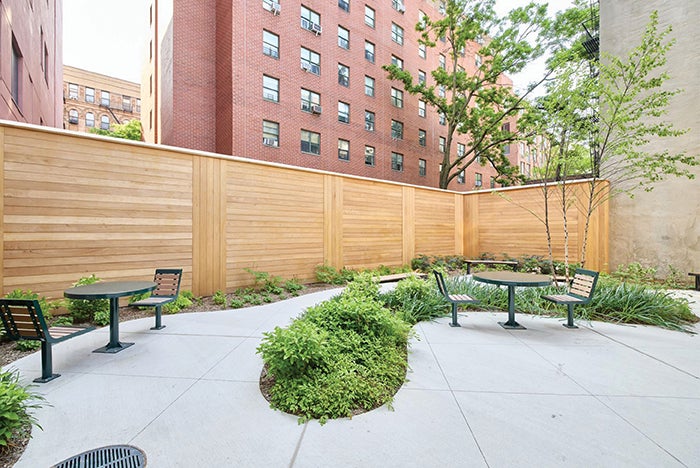Behavioral health designs focus on healing and ending stigma

Mount Sinai worked with the design team at HKS to create a welcoming and healing environment for patients.
Image courtesy of Mount Sinai Health System
As the demand for behavioral health services continues to grow, hospitals and health systems are placing greater focus on the impact of design in behavioral health facilities. Whether renovating or retrofitting existing spaces or building new construction, designs are focused on eliminating stigma, centralizing services and creating safe, therapeutic environments that promote healing.
When it opened in June, Live Oak Mental Health and Wellness in Ladson, S.C., became the first mental health hospital to open in the state in more than 30 years. The design of the free-standing hospital, part of Trident Health System in North Charleston, S.C., includes a full-service cafeteria that provides patients with an alternative to in-room dining, which can make some patients feel isolated and anxious. Two outdoor courtyards provide a secure space for patients to relax or participate in group activities like yoga.
In Texas, Rusk State Hospital’s newly opened patient complex and administrative building also takes advantage of outdoor space. The 227,368-square-foot facility features several outdoor courtyards and a greenhouse to promote healing and recovery. The courtyards are also a source of natural light; all patient rooms have windows that overlook one of the exterior spaces.
“The outdoor spaces, views and abundance of natural light provide stress-reducing distractions,” says Jose Andreas Araiza, deputy press officer for Texas Health and Human Services.
The 200-bed inpatient unit features all private rooms, providing a homelike environment to allow privacy and facilitate healing.
Resident units are comprised of eight or nine patient rooms that open into short corridors leading to a shared, centralized living room. The communal area includes a kitchen and laundry facilities, and an exercise and reading room. This design is meant to provide choices to empower patients, whether it be the privacy of their room or participating in a group activity in a communal space.
The hospital also features various therapeutic, social and recreational experiences to prepare patients for life outside the hospital. These include a gym with basketball and volleyball courts, a teaching kitchen, library and hair salon. The goal is to provide patients with education and skills to promote long-term wellness.
In the lower Manhattan area of New York City, Mount Sinai Health System’s new behavioral health center supports a new model of behavioral health care delivery. Designed by HKS Inc. and housed in a 125-year-old building, the six-story, 134,125-square-foot center brings behavioral health, substance abuse, social services and primary care under one roof.
“We wanted to build a one-stop shop for behavioral health services,” says Grant Mitchell, M.D., chair for the Department of Psychiatry at Mount Sinai Beth Israel. “Beyond providing high-quality care, our focus was to design a space that provides an exceptional patient experience.”
The “No Wrong Door” model ensures all patients receive a comprehensive medical evaluation, recognizing that patients with behavioral health disorders may suffer from comorbidities and often struggle with access to services. Patients will no longer have to see multiple providers at various locations. Instead, they will be treated by interdisciplinary teams.
In addition to providing comprehensive inpatient and outpatient services, the Mount Sinai-Behavioral Health Center will include eight extended observation beds designed for patients in need of short, intensive treatment, as well as an eight-bed intensive crisis residence for patients experiencing acute mental health crises but not in need of hospitalization.
Key design features include high ceilings and natural light throughout. Communal spaces are large and open, featuring murals and comfortable furnishings. Soft music plays throughout waiting areas to reduce stress and anxiety.
“We were tasked with transforming a building originally constructed in 1898 into a state-of-the-art healing environment with patient safety and dignity as our guiding principle,” says Lynne Rizk, health practice leader for HKS’ New York office. “The result is a phenomenal, one-stop mental and behavioral health facility that provides a calming and comfortable environment with a courtyard garden and access to the community park.”

